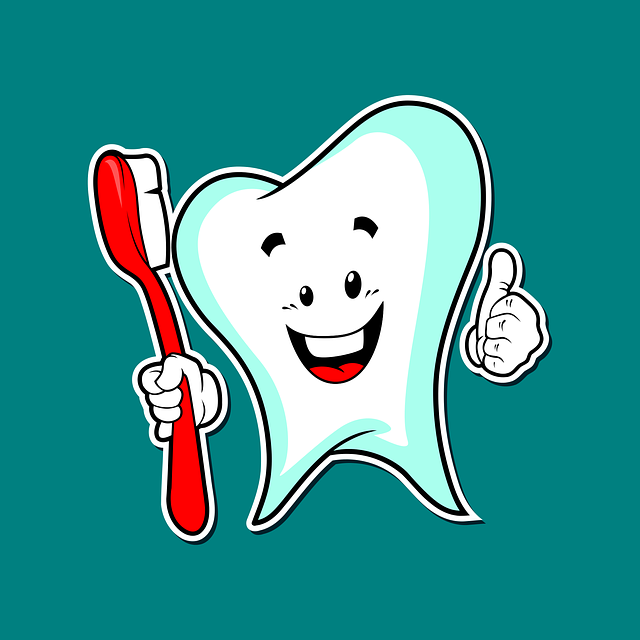Are you considering getting veneers? Find out the truth about whether dentists shave down your teeth for this popular dental procedure.
1. The Dental Procedure: Demystifying Veneers and Teeth Reshaping
Veneers and teeth reshaping are popular dental procedures that can help improve the appearance of your smile. Whether you have chipped, stained, or misaligned teeth, these treatments offer a way to achieve a beautiful, natural-looking smile.
Veneers: Veneers are thin, custom-made shells of porcelain that are bonded to the front surface of your teeth. They are designed to match the color and shape of your natural teeth, giving you a seamless and aesthetically pleasing smile. Veneers can be used to correct a variety of dental issues, such as discoloration, gaps between teeth, and irregularly shaped or sized teeth.
Teeth reshaping: Also known as dental contouring or enameloplasty, teeth reshaping is a procedure that involves removing small amounts of enamel to change the shape, length, or surface of a tooth. It is often used in combination with veneers to create a harmonious and balanced smile. This procedure is quick and painless, and it can be an effective solution for correcting minor imperfections, such as small chips, uneven edges, or overly pointy teeth.
2. Achieving That Perfect Smile: A Closer Look at Veneers and Tooth Preparation
Veneers are a popular dental solution for achieving a flawless smile. These wafer-thin shells made from porcelain or composite materials are custom-made to fit over the front surface of your teeth. Before veneers can be placed, some tooth preparation is required to ensure a seamless and natural-looking result.
Tooth preparation for veneers involves several steps. First, a small amount of enamel is typically removed from the front of the tooth to create space for the veneer. This ensures a proper fit and prevents the veneer from appearing bulky or unnatural. The amount of enamel removed is usually minimal and equivalent to the thickness of the veneer itself. Next, an impression of the prepared tooth is taken, which is then sent to a dental laboratory for the fabrication of the veneer. Temporary veneers may be placed to protect your teeth while the permanent ones are being made.
During the process of getting veneers, it’s important to consider some key factors. The shade of the veneers can be carefully chosen to match your natural teeth, helping to achieve a more harmonious overall appearance. Additionally, the shape and size of the veneers can be customized to enhance your smile and correct any tooth imperfections. With proper care and maintenance, veneers can last for many years, providing you with a radiant and confident smile that you can proudly show off.
3. Veneers Unveiled: Understanding the Process and Tooth Reshaping
Veneers are a popular cosmetic dentistry procedure for achieving a stunning smile. If you’re considering veneers and want to understand the process and tooth reshaping involved, this article is here to provide you with a comprehensive overview.
The veneer procedure typically involves the following steps:
- Consultation: Schedule an appointment with your dentist to discuss your desired outcome and evaluate whether you are a suitable candidate for veneers.
- Preparation: During this stage, your dentist will prepare your teeth by removing a thin layer of enamel. This may require local anesthesia to ensure your comfort.
- Impressions: Your dentist will then take impressions of your teeth, which will serve as a model for creating custom veneers.
- Temporary Veneers: In some cases, temporary veneers may be placed while your permanent veneers are being fabricated.
- Permanent Placement: Once your custom veneers are ready, your dentist will check their fit, color, and shape. If everything looks perfect, the veneers will be bonded to your teeth using a special adhesive.
Tooth reshaping, also known as enamel contouring, may be performed alongside veneer placement to enhance the overall outcome. This cosmetic procedure involves removing small amounts of enamel to reshape the teeth, correcting minor imperfections and achieving a more balanced appearance. It is a quick and painless procedure that can often be completed in a single dental visit.
4. A Non-Invasive Way to Enhance Your Smile: The Truth About Shaving Teeth for Veneers
Are you looking to enhance your smile without undergoing invasive procedures? Shaving teeth for veneers is a popular and non-invasive solution that can transform your smile with minimal discomfort. Here’s everything you need to know about this cosmetic dentistry technique:
1. What is teeth shaving for veneers?
Teeth shaving for veneers, also known as enameloplasty, involves removing a thin layer of enamel from the front surface of your teeth. This process creates space for veneers to be bonded to your teeth, giving them a natural-looking and aesthetically pleasing appearance.
2. Is it painful?
One of the biggest concerns people have about dental procedures is pain. However, shaving teeth for veneers is a minimally painful process. Your dentist will administer a local anesthetic to numb the area before removing the enamel. This ensures you won’t feel any discomfort during the procedure.
3. How much enamel is removed?
The amount of enamel removed depends on your specific case and the desired outcome. Generally, only a small amount of enamel is shaved off to ensure a proper fit for the veneers. Your dentist will carefully assess your teeth and discuss the amount of enamel that needs to be removed before proceeding.
4. Are there any risks or side effects?
Shaving teeth for veneers is considered safe and has minimal risks. However, it’s worth noting that removing enamel permanently alters your teeth. While veneers can be a fantastic way to enhance your smile, it’s imperative to consult with a qualified dentist who will carefully evaluate the health of your teeth and determine if this procedure is suitable for you.
5. How long do veneers last?
Veneers are designed to be durable and long-lasting. With proper care, veneers can last anywhere from 10 to 15 years or even longer. Maintaining good oral hygiene, avoiding biting on hard objects, and regular visits to your dentist will help extend the lifespan of your veneers.
In conclusion, shaving teeth for veneers is a non-invasive and effective way to enhance your smile. With advancements in cosmetic dentistry, this procedure can provide you with natural-looking results while ensuring minimal discomfort. Consider consulting with a qualified dentist to discuss whether veneers are the right option for you and achieve the smile you’ve always dreamed of.
5. Dental Veneers: Debunking Myths Surrounding Tooth Reduction
When it comes to dental veneers, there are many myths surrounding the need for tooth reduction. Let’s debunk these myths and get to the facts.
Myth 1: Tooth reduction for veneers is excessive and damaging.
- Fact: Tooth reduction is necessary to ensure a seamless and natural-looking result.
- A minimal amount of enamel is removed, generally around 0.5 to 1.5 millimeters.
- This is a conservative approach that allows the veneer to bond properly and create a beautiful smile.
- Advancements in dental technology have also made it possible to use ultra-thin veneers that require minimal or no tooth reduction.
Myth 2: Tooth reduction causes sensitivity and weakens the tooth structure.
- Fact: While sensitivity can occur temporarily after tooth reduction, it is minimal and manageable.
- Modern techniques and anesthetics ensure a comfortable experience during the procedure.
- With proper oral hygiene and regular dental care, the tooth structure remains strong and healthy.
- It’s important to note that veneers actually strengthen the tooth by adding an additional layer of protection.
By separating fact from fiction, it becomes clear that tooth reduction for dental veneers is a safe and effective procedure. Discussing your concerns and expectations with a qualified dentist will help you make an informed decision and achieve the smile you’ve always wanted.
6. Preserving Your Natural Teeth: How Dentists Approach Tooth Reshaping for Veneers
Preserving your natural teeth is a top priority for dentists when considering tooth reshaping for veneers. Rather than removing excessive tooth structure, dentists aim to conserve as much of the natural enamel as possible, ensuring the longevity and health of your teeth. Here’s how dentists approach tooth reshaping for veneers:
1. Comprehensive examination: Your dentist will conduct a thorough examination to evaluate the condition of your teeth and determine if tooth reshaping is suitable for you. This will involve assessing the health of your gums, teeth, and supporting structures, as well as discussing your cosmetic goals.
- They will take X-rays and perform various tests to identify any underlying dental issues that need to be addressed before proceeding with veneers.
- Based on the examination, your dentist will develop a personalized treatment plan tailored to your specific needs.
2. Minimal tooth preparation: Dentists utilize a conservative approach when reshaping teeth for veneers. They generally remove a minimal amount of enamel, just enough to create space for the veneer while preserving the strength and structure of the natural tooth.
- The amount of tooth structure to be removed will depend on factors such as the condition of your teeth, the desired outcome, and the type of veneer being used.
- Modern techniques and materials allow for tooth reshaping to be performed with precision, resulting in a more aesthetic and comfortable fit for the veneers.
7. The Art of Tooth Preparation: Exploring the Dentist’s Role in Veneer Placement
Veneers are a popular cosmetic dental treatment that involves bonding thin shells of porcelain or composite resin to the front surface of teeth. The success and longevity of veneers heavily depend on the skillful tooth preparation performed by dentists.
1. Evaluation: The initial step in tooth preparation for veneers is a comprehensive evaluation of the patient’s oral health. Dentists examine the overall condition of the teeth and surrounding tissues to ensure that veneers are a suitable option. X-rays and impressions may be taken to assess the extent of tooth damage or decay.
- Determine if the patient’s oral health is suitable for veneers
- Take x-rays and impressions to assess tooth condition
2. Treatment planning: Once it is established that veneers are appropriate, dentists carefully plan the treatment. They take into consideration the individual needs and goals of the patient, as well as the desired shape, size, and shade of the veneers. A mock-up or digital smile design may be created to help visualize the final results.
- Consider patient’s needs and goals for the treatment
- Determine the desired shape, size, and shade of the veneers
- Create a mock-up or digital smile design
Dentists are the key players in the successful placement of veneers, as they determine the appropriate tooth preparation, treatment planning, and ensure the highest level of precision during the procedure. This expertise and attention to detail are essential for achieving beautiful, long-lasting results for patients seeking a radiant smile.
8. Transforming Your Smile with Veneers: What You Need to Know About Tooth Shaving
If you’re considering transforming your smile with veneers, it’s important to understand the process of tooth shaving. This technique is commonly used to prepare your teeth for veneer application. Here’s all you need to know before taking the plunge:
1. Importance of tooth shaving:
- To ensure a proper fit and natural-looking results, your dentist will shave a small portion of your tooth enamel before applying the veneer.
- Shaving helps create space for the veneer, ensuring it aligns perfectly with your surrounding teeth.
- It’s a painless procedure with the use of local anesthesia.
2. How tooth shaving is done:
- Your dentist will examine your teeth and discuss your desired outcome. Based on this, they will determine the amount of enamel that needs to be removed.
- A minimal layer of enamel, usually about 0.5mm, is shaved using specialized dental tools.
- The shaved tooth is then cleaned, and a temporary veneer may be placed until your custom veneer is created.
- Once the veneers are ready, they will be bonded to your teeth using a strong dental adhesive.
By understanding the tooth shaving process, you can feel confident in your decision to enhance your smile with veneers. Consult with your dentist for personalized advice and to discuss the best options for achieving your dream smile!
9. The Science Behind Veneers: How Teeth Reshaping Enhances Their Durability
Veneers are a popular dental treatment for improving the appearance of teeth, but did you know that there’s science behind why they are so durable? Teeth reshaping, also known as enameloplasty, is a crucial step in enhancing the longevity of veneers. By removing a small amount of enamel from the tooth’s surface, dentists create space for the veneer to be bonded securely, ensuring a strong and lasting result.
During the teeth reshaping process, dentists utilize advanced techniques and tools to shape and contour the tooth. This involves smoothing rough areas, adjusting the length or shape, and creating an optimal surface for the veneer to adhere to. By carefully reshaping the tooth, any pre-existing damage or imperfections, such as chips or cracks, can also be addressed, further enhancing the overall durability of the veneer.
- The science behind veneers lies in the bonding process. Dentists use a specialized adhesive to attach the veneer to the tooth, creating a strong and long-lasting bond.
- Veneers are typically made from high-quality materials such as porcelain or composite resin, which are known for their exceptional strength and durability.
- Rigorous laboratory testing ensures that veneers are resistant to staining, chipping, and normal wear and tear, making them a reliable solution for transforming your smile.
With the combination of proper tooth reshaping and the advanced materials used, veneers can maintain their durability for many years to come. The science behind veneers reinforces their ability to withstand the everyday pressures of biting and chewing, allowing you to enjoy a confident and radiant smile for a lifetime.
10. A Comprehensive Guide to Getting Veneers: From Consultation to Tooth Shaving
Consultation:
Before getting veneers, it’s essential to have a consultation with a qualified dentist. During this appointment, your dentist will carefully examine your teeth and discuss your expectations. They will explain the veneer process in detail, addressing any concerns or questions you may have. Additionally, they might take X-rays and impressions of your teeth to create a personalized treatment plan.
When preparing for your consultation, it’s helpful to compile a list of questions about veneers. You may want to inquire about the types of veneers available, the benefits and potential risks, and the anticipated outcome. It’s important to be open and honest during this meeting, expressing your desires and concerns so that the dentist can provide you with the best solution for your unique situation.
Tooth Shaving:
One of the most critical steps in the veneer process is tooth shaving, also known as tooth preparation. This involves removing a small portion of the tooth enamel to create room for the veneer placement. While this may sound daunting, it is generally a painless procedure. Your dentist will administer a local anesthetic to ensure your comfort during the process.
The amount of tooth enamel removed varies depending on the type of veneer and the condition of your teeth. Your dentist will skillfully shave off a thin layer of enamel, typically about half a millimeter, from the front surface of the tooth. This step is essential to ensure that the veneers fit precisely and look natural. Once the tooth is prepared, your dentist will take impressions of your teeth to create custom-made veneers that perfectly match your desired shape, size, and color.
In conclusion, dental veneers require a minimal amount of tooth reduction for a flawless fit. This procedure is safe, painless, and provides a long-lasting solution for various dental imperfections. Trust your dentist’s expertise to achieve that perfect smile you’ve always wanted!






